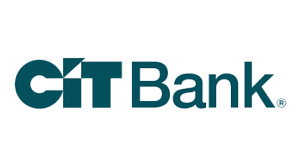If you’ve been paying attention to savings account and CD rates, you may have noticed that they’re lower now than they were during the summer. That’s because the Federal Reserve has started cutting its benchmark interest rate in response to cooling inflation, and when this happens, banks also lower the rates they offer consumers. So if you’re interested in opening a CD, it’s a good idea to do it now.
That said, you need to be careful about putting money into a CD, because most of them will hit you with a steep penalty if you take your cash out early. So you don’t want to go overboard on funding a CD.
But let’s say you have $25,000 on hand to put into a CD before rates fall even more. Should you go all in? Or is $25,000 too much cash to have in a CD?
When going big on a CD makes sense
Some CDs come with a minimum deposit, but it’s pretty uncommon for that minimum to be $25,000. That’s not an attainable sum for a lot of people. While you might find a CD with a $5,000 minimum, $25,000 is a different story.
Our Picks for the Best High-Yield Savings Accounts of 2024
|
American Express® High Yield Savings 
APY 4.10%
|
APY 4.10%
|
Min. to earn $0 |
|
Capital One 360 Performance Savings 
APY 4.10%
|
APY 4.10%
|
Min. to earn $0 |
|
CIT Platinum Savings 
APY 4.70% APY for balances of $5,000 or more
Min. to earn $100 to open account, $5,000 for max APY
|
APY 4.70% APY for balances of $5,000 or more
|
Min. to earn $100 to open account, $5,000 for max APY |
It could make sense to put $25,000 into a CD if that money is earmarked for a relatively short-term goal. Say you want to buy a house in 2026 and that $25,000 is for your down payment. Putting it into a 12-month CD right now isn’t a bad choice. Click here for a list of the best CD rates today.
The reason it pays to put that much money into a CD in this situation is because your goal isn’t very far off, which makes investing a risky prospect. But if your money is for a goal that’s about seven years out or longer, then investing makes more sense than limiting yourself to a CD.
A more efficient way to grow your wealth
Even though some CDs are still paying close to 5% today, the S&P 500’s average annual return over the past 50 years is 10%. And that accounts for good years as well as bad ones.
If you put $25,000 into a stock portfolio that gives you a 10% annual return, in 20 years, you’ll have about $168,000. On the other hand, let’s say you put your $25,000 into a 12-month CD that you keep renewing at 4%. In 20 years, you’ll end up with about $55,000.
But that also assumes you can even get 4% from CDs over such a long period, which is unlikely. And even if you do, you’re talking about a $113,000 difference compared to what a stock portfolio might give you.
Don’t leave yourself short on emergency savings
You may decide you’re not ready to invest, and that opening a $25,000 CD makes sense for you. But before you commit, assess your emergency fund and make sure you’re leaving yourself with enough money in a regular savings account to cover at least three months of essential bills.
You don’t want to take the attitude that you can always cash out your CD early if you need money in a pinch, because then you’ll generally face a penalty like we talked about earlier. And that penalty could negate the benefit of opening a CD in the first place.
All told, $25,000 is a lot of money to put into a CD. But that doesn’t mean it’s an unreasonable sum for you. Think about your savings timeline and your emergency fund needs before diving in.

